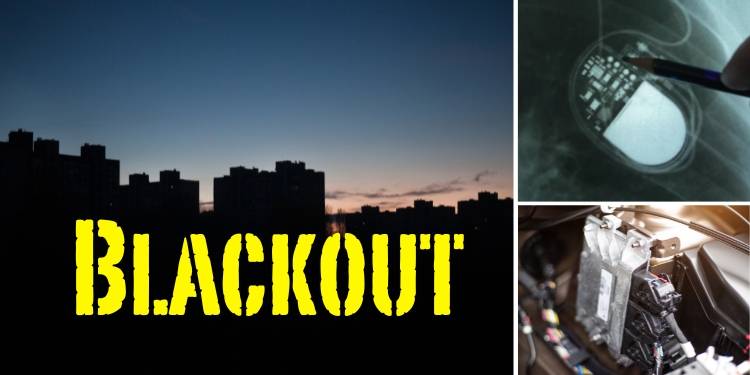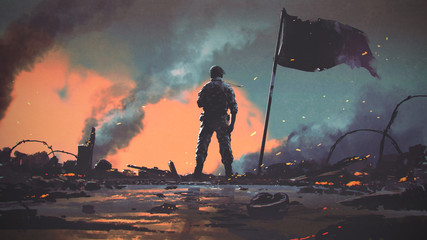10 Household Items You Can Use to Communicate Post-EMP
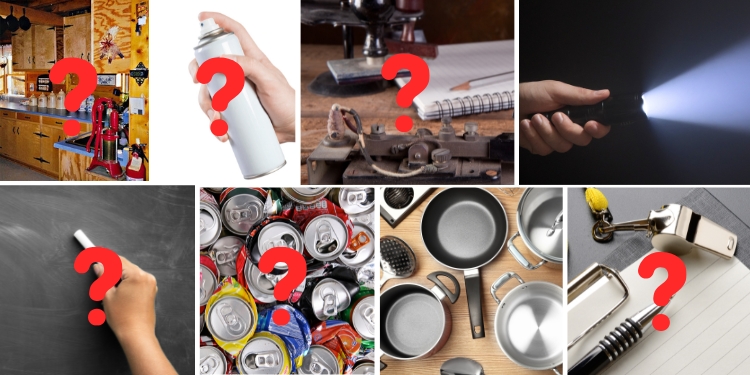
An electromagnetic pulse from a strategic attack or a coronal mass ejection from the sun will instantly cause communication infrastructure to collapse. Cell towers will be fried, the internet will crash, and most forms of digital communication will be inoperable. The only working radios will be the ones that were shielded in a Faraday cage.
For the average person, this spells total communication isolation. However, I feel that I have to point out that people were communicating with each other over significant distances for centuries before the digital age. You might be surprised at just how many low-tech household items you can use for communication in a post-EMP world.
Using Morse Code with Flashlights
In a post-EMP world, a basic flashlight can become a powerful communication tool to signal others using Morse code. If you’re trapped, hiding, or need to silently communicate, a series of long and short flashes can do the job.
Basic Morse Code Letters
A ·– H ···· O ––– V ···–
B –··· I ·· P ·––· W ·––
C –·–· J ·––– Q ––·– X –··–
D –·· K –·– R ·–· Y –·––
E · L ·–·· S ··· Z ––··
F ··–· M –– T –
G ––· N –· U ··–
Basic Morse Code Numbers
0 ––––– 5 ·····
1 ·–––– 6 –····
2 ··––– 7 ––···
3 ···–– 8 –––··
4 ····– 9 ––––·
Timing Tips for Communicating Via Morse Code
The average person using Morse code tends to go too fast, and the receiver makes errors that obscure conversation. This can be a major problem if you mean to tell someone “That Road Isn’t Safe,” but in the rush, they decode “That Road Is Safe.” It’s a difference of only 2 letters, but it can have tragic consequences!
The wise move is to practice Morse code timing with friends and family members.
DOT (·) = quick flash (about 1 second) -> DASH (–) = long flash (about 3 seconds) -> Space between parts of a letter = 1 second, then between letters = 3 seconds, then between words = 7 seconds
Pro Tip: Learn the SOS pattern (· · · – – – · · ·) and basic Morse letters. Print a cheat sheet now and keep it taped to your light or stored in your prepper binder.
Mirrors for Daylight Signaling
For daytime communication in a post-EMP world, just about any mirror, even a compact makeup mirror, can be used to flash sunlight for Morse code. This technique has been used by military personnel and hikers for decades and replaces the household flashlight you use for signaling at night.
How to Signal with a Mirror
The trick to signaling with Morse code using a mirror is to hold it close to your eye. This will help you aim it at the target and reflect sunlight in short bursts. Be mindful of where you see the light on the other target.
If someone else is in a window, imagine they are observing the entire frame. For the dot or dash, move the entire area of light over the window frame and off again. It’s the only way to ensure that they are seeing the correct pulse and duration of light. Again, take it slow to ensure proper clarity.
Whistles
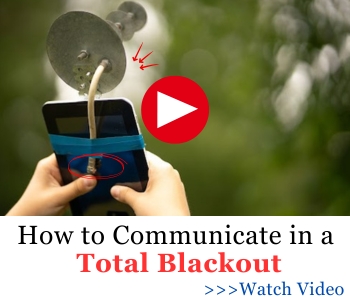 A whistle cuts through wind and ambient noise, carrying sound much farther than a human shout. High-pitched noises are also easier to pinpoint than low-frequency sounds. If you’re trying to locate someone in a dense forest or alert your group from a mile away, a whistle is a battery-free lifesaver.
A whistle cuts through wind and ambient noise, carrying sound much farther than a human shout. High-pitched noises are also easier to pinpoint than low-frequency sounds. If you’re trying to locate someone in a dense forest or alert your group from a mile away, a whistle is a battery-free lifesaver.
Pro Tip: Whistles tend to be a poor way to communicate Morse code letters and numbers. Especially since anyone can hear them. Instead, it’s better to have some basic whistle code patterns that everyone in your trust group knows.
One blast for attention, two for danger, three for come here. With 10 or so key patterns, you should be able to communicate basic information in the field.
For more ways to prepare your home as a communication and defense hub, check out A Navy SEAL’s Bug-In Guide, by Joel Lambert, an actual survival expert. It’s packed with practical strategies to stay safe without ever stepping outside.
Whiteboards & Dry-Erase Markers
A whiteboard and grease markers might not seem like survival tools, but they’re an easy way to leave messages around your property or on a trail. I have a few leftovers in the basement from when I was teaching my kid numbers and letters.
They’re reusable, don’t use paper, and are readable in low light with a flashlight. In a pinch, laminated sheets of paper can replace a traditional whiteboard and are inexpensive.
Then also have specific code words that everyone in your trust group knows. Give each person a code name and then use different expressions for words like: Safe, Danger, Garage, Home, Stay Put, Follow.
Pro Tip: Put some type of whiteboard in key locations: gate, driveway, chicken coop, water source. If someone has to leave the property and return, the standard operating procedure should be to check a whiteboard for any important information.
Chalk
If you need to leave large, visible messages quickly, chalk and any hard surface will do the trick. Leave arrows, codes, or warnings for others in your group. Here again, you want to have prearranged symbols and words that everyone in your trust group knows to reduce the risk of intercepted messages.
A star might mean “Danger Here,” while a triangle might signal a “Safe Zone.” A circle might mean walk the perimeter, or three wavy lines might mean water.
Spray Paint or Marking Paint
The spray paint you find in most garages and household utility closets can be an effective communication tool for expressing basic information. It sticks to almost any surface, like roads, trees, walls, and doors. It also lasts longer than chalk and can be written boldly to be seen from a distance, when stealth isn’t a factor.
Pro Tip: Create a coding system that borrows from the FEMA X nomenclature. Except put the word Bio in the right quadrant every time. People in the know understand that this means there’s a biohazard present.
Make sure everyone in your trust group knows to look for one or two dots to determine if there truly is a biohazard. This creates a red herring that can provide you with an extra level of safety on a main gate, barn door, or house.
Of course, markings and coded signs are only part of your perimeter security. If you want to learn how to defend your home with military efficiency, you can find here some practical training tailored to real-world survival situations.
Cans & String
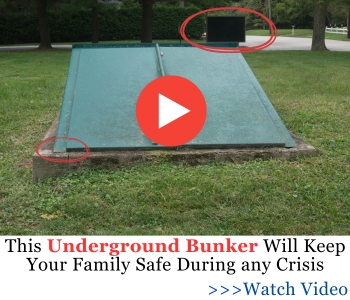 Yes, I know that cans and string sound like a cliché way to communicate in a post-EMP world. However, it’s still an effective way to communicate within 100 feet, and something you can set up to talk to someone in an outbuilding.
Yes, I know that cans and string sound like a cliché way to communicate in a post-EMP world. However, it’s still an effective way to communicate within 100 feet, and something you can set up to talk to someone in an outbuilding.
The trick is to tie each end of the string to a washer inside the cup.
This will create a clearer vibration. You can set up a simple whistle or other signal to let the person on the other end know to tighten the string.
All this talk of post-collapse communication raises an important question: where do you safely store your most essential tools—radios, batteries, signaling gear—so they survive an EMP or nuclear threat?
Many preppers turn to The Easy Cellar, a guide that shows how to build a hidden underground bunker in your own backyard. It’s the ideal place to stockpile long-term food, set up a basic comms hub, and shield electronics from EMP damage. Inside, you’ll learn:
If you don’t already have a secure, hidden storage area for your most important post-SHTF tools, this might be your best investment.
Signal Flags or Colored Strips of Cloth
Anything from a bath towel to a T-shirt becomes a visual flag signal. Drape red cloth for “Warning,” white for “Peace,” or medical need, yellow for “Caution,” green for “All Clear.” You can even use it on a rope to send message combinations like sailors often do, coming into port. This only works with pre-agreed meanings or in line-of-sight conditions, but it can be fast and effective.
Many of these methods were used long before the digital age. The Amish Ways Book offers time-tested survival knowledge from a community that thrives without modern technology.
Strips of Duct Tape
Simple strips of duct tape can be used just like pieces of cloth tied to a rope. You can apply them to just about any smooth surface or wrap them around tree branches. Touching the adhesive to adhesive will bond it tightly for several days, if not weeks, on limbs, pipes, and car antennas.
You can leave multiple rolls of colored, high-visibility, or reflective duct tape in gallon-size zip-top bags. Then position them at key places on your property, trails, or gate posts.
Different Color Rocks
Leaving different colored rocks in your landscaping beds, near your mailbox, or another visible transition area can be a way to communicate basic information to your trust group. To outsiders, these are just rocks. Yet the people in your group know to look for those rocks every time they come or go.
If a specific rock is missing or added it warns them of danger. If multiple rocks of the same color are set up in a pattern, it could indicate where you’ve gone. Just make sure everyone in your group knows the basic codes for the stone pattern.
One More Thing…
After an EMP, clean water becomes one of the most critical needs. That’s why The Infinite Water Bottle is such a game-changer. This isn’t your average water filter. It’s a backpack-sized water generator that can turn thin air into drinkable water. Here’s why it can work wonders for you, even during regular, calm times:
- Compact enough to carry or stash in every bug-out bag
- Works without electricity or complicated parts
- You can refill indefinitely
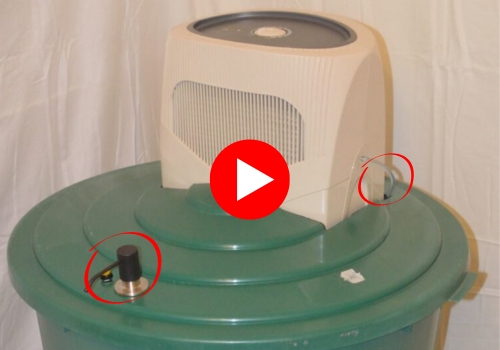
In a world where tap water is more and more dangerous, this is one of the tools that can keep you and your family safe by providing clean water. At least 10 gallons of it per day!
A great alternative would be to go for this water system that filters out 99.99% of bacteria and contaminants
Final Thoughts on Post EMP Communication
Being able to communicate using basic household items when an EMP event strikes will help keep you ahead of the game. Making sure that everyone in your trust group has a working knowledge of Morse code, along with basic flashlights and mirrors, is a good start.
Other items, such as spray paint, chalk, and warning flags, also provide a means to communicate broad warning messages at a distance. Whereas a simple tin can and string can let you communicate quickly with people in outbuildings and watch posts.
Just make sure that everyone in your group knows the code signals. Then they check in on them when they’re supposed to.
If you’re storing radios, flashlights, or anything electronic at key checkpoints, don’t forget to shield them properly. This EMP Cloth offers 98% military-grade protection and can be wrapped around your gear to keep it safe from a devastating pulse.
You may also like:
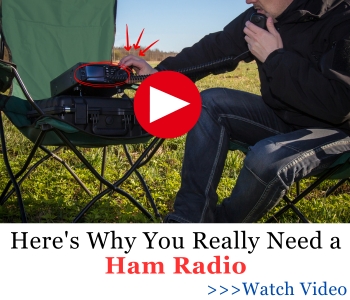
6 Post-SHTF Communication Myths
Slash An Excess Of 70% Off Your Power Bill Overnight (Video)
The Only Form of Communication After T-SHTF
What Is Morse Code?
Cheap Items That Could Save Your Life During an EMP
Read the full article here




